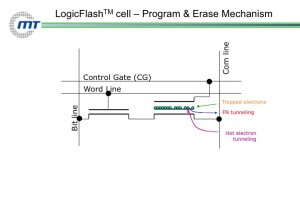Leading edge capacity will never again be a commodity. Recent trends are making manufacturing more valuable and scarce, according to Future Horizons whose IEF 2011 conference in Seville started this morning.
Between 1998 and 2008 investment in new semiconductor equipment as a percentage of semiconductor sales was around the 16.75% trend line but, in Q1 2008, investment was cut back.
Although it bounced back in 2010, it failed to reach the level of investment seen in 2007, was 9% percent lower than the previous investment peak in 2000, and significantly slowed in Q4 2010, despite the fact that utilisation was running at 96.6% and on allocation.
Utilisation has continued to increase, a situation that is not going to change given the investment cutbacks now in place. A cut-back in equipment spending of 19% this year is predicted.
Leading-edge wafer fab capacity is not going to become a commodity item, supply will be limited and longer term supply commitments are the new name of the game. The era of ever-cheaper, freely available wafers is over, at least at the leading edge.
Compounding the problem is the likely move to 450mm wafers. The firms with 450mm capability have a potential 30% lower die cost advantage and a more efficient manufacturing tool platform.
The remaining 300mm platforms will be squeezed into increasingly over-crowded niches.
Transistor design complexity, new structures and tighter design rules will mean that semiconductor firms will be forced to choose a lifetime foundry partner; divorce and second sourcing will become too expensive for all but the very biggest firms to even contemplate.
Only a handful of chip firms will have early access to next-generation foundry technology, giving them at least a one-year advantage over their competitors.
The era of abundant leading-edge capacity is over. Buying capacity up front will become the new industry norm, eventually to be enhanced by up-front contributions to future capacity investment costs and effectively co-owning portions of the capacity–a kind of IDM-lite model.
From an equipment industry perspective, financing new tool development will mirror the airline industry model, whereby customers make long-term up-front commitments with deposits and partial payments to ensure both delivery and their place in the queue.
New business models will emerge built increasingly on co-operation and partnerships, with an ever-increasing need for all parties to share the technology risks and costs, and the old adversarial-driven supplier-customer relationship will no longer be appropriate.
 Electronics Weekly Electronics Design & Components Tech News
Electronics Weekly Electronics Design & Components Tech News


@Dr Bob,
Are you suggesting that this is morally wrong? If so than build your own **** fab! and when your finished see if your not somewhat inclined to take a sweet little “co-operation” deal that the gov’t pushes your way.
Dr Bob … how could you think that way about the ever-alturistic chip industry and the 23rd Province of China … shame on you 🙂
And when the foundry and the semi firms are in the same country then the government of that country will apply pressure to insure that the indigenous companies benefit before others